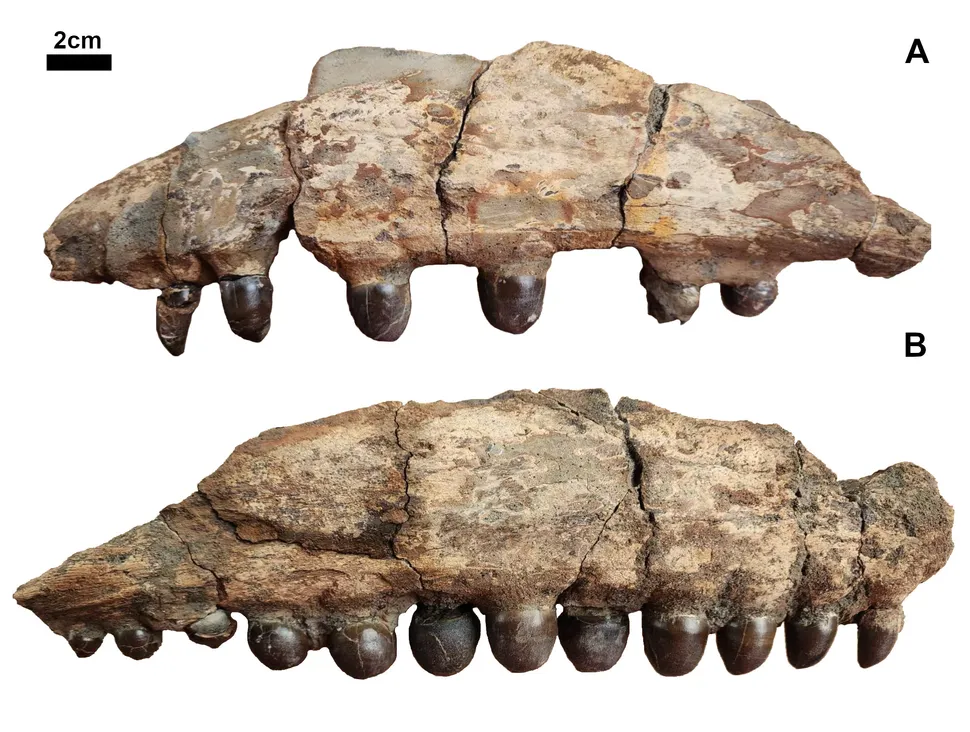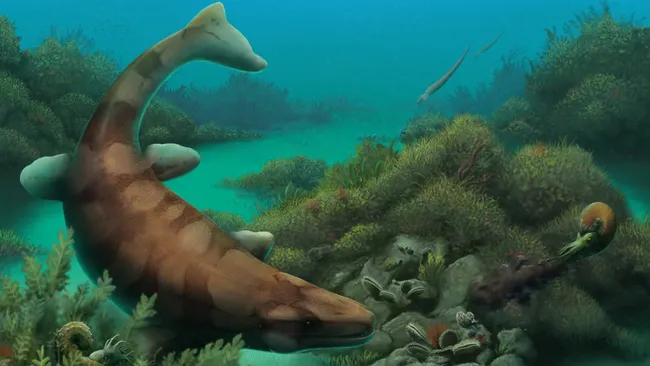Unearthing an Ancient Predator
Rare fossils of the mosasaur Globidens alabamaensis, a 20-foot predator known for its unusual, mushroom-shaped teeth, have been discovered in northeastern Texas. A recent study highlights the significance of these findings, revealing new insights into the lifestyle of this ancient marine reptile.
Insights from Fossil Fragments
The study focuses on two adult jaw fragments of Globidens alabamaensis, which may have reached lengths of up to 20 feet (6 meters). These fossils showcase the distinctive blunt teeth of the mosasaur, which were adapted for powerful impact attacks, particularly for crushing shells. Bethany Burke Franklin, a marine paleontologist and educator at the Texas Through Time fossil museum, notes the effectiveness of these mushroom-shaped teeth for shell-crushing, a strategy that likely made prey escape nearly impossible.
Ecological Context of the Late Cretaceous Period
During the Late Cretaceous period (100.5 million to 66 million years ago), significant changes in climate and marine ecosystems led to the decline of many iconic marine predators like ichthyosaurs and plesiosaurs. Mosasaurs, however, emerged as the dominant predators in shallow seas, quickly diversifying to occupy various ecological niches once held by their predecessors.
Historical Discoveries and Species Diversity
Globidens alabamaensis was first discovered in 1912, but only a few near-complete specimens have been found. Most existing fossils consist of teeth and small jaw fragments. Since its discovery, four additional species of Globidens have been described, each with its own unique adaptations. Unlike other mosasaurs with dagger-like teeth, Globidens evolved blunt, rounded teeth ideal for crushing the shells of turtles, ammonites, and bivalves. The Western Interior Seaway, which once split North America, provided a rich array of shelled prey for these ancient predators.
Recent Discoveries and Fossil Preservation

The newly found fragments were uncovered by a private fossil hunter in 2023 from the Ozan Formation in northeastern Texas. Despite the formation’s thin 8-inch (20-centimeter) layer, it has yielded a wealth of fossils, including those of other mosasaurs. The preservation of cranial material, which often gets squashed in thin strata, is particularly exciting for paleontologists.
Unique Adaptations and Ecological Impact
One jaw fragment still contains 12 teeth, while the other has six, all around an inch long and rounded for shell-crushing. The presence of a germ tooth in one jaw suggests that, like sharks, mosasaurs continually shed and replaced their teeth throughout their lives. The unique adaptation of Globidens allowed it to coexist with other large mosasaurs by exploiting different resources. Franklin explains that this diversity in feeding strategies was likely driven by an abundance of cephalopods, enabling multiple species to thrive in the same environment without competing for the same resources.
